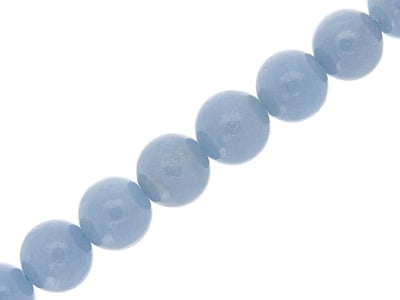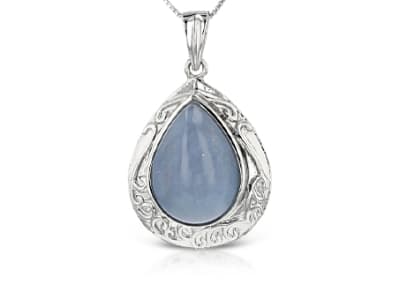Angelite is the bluish gray translucent variety of anhydrite from Lima, Peru that was discovered in 1987. It was introduced to the gem market at the 1989 Tucson shows. Since it is soft it can be carved or shaped into decorative objects like eggs or spheres and is polished into cabochons and beads for jewelry. Anhydrite is a sedimentary mineral that occurs after large volumes of sea water evaporates.
General Information
Common Name
Angelite
Species
Anhydrite
Transparency
Translucent
Dispersion
Strength: Weak Fire Value: 0.013
Refractive Index
1.570-1.614
Optic Character
Biaxial
Optic Sign
Positive
Polariscope Reaction
Aggregate (AGG)
Fluorescence
LWUV: Inert to red
Hardness
3-3.5
Streak
White
Toughness
Poor
Luster
Greasy, Pearly, Vitreous
Stability
Poor
Fracture
Uneven to Splintery
Cleavage
Perfect cleavage in 3 directions often forming cubes
Chemical Name
Calcium sulfate
Chemical Formula
CaSO4
Crystal System
Orthorhombic
Chemistry Classification
Sulfate
Angelite Colors
-
 Blue
Blue -
 Gray
Gray
Alternate Names
Angel stone, Angeline, Anhydrite
Countries of Origin
Unknown; Mexico; Peru
Care
Angelite is very soft, so be mindful of scratching. Avoid abrasives, ultrasonic, solvents, or exposure to water.
More About Angelite
As the name angelite suggests the stone is supposed to bring spiritual awareness and peace.

